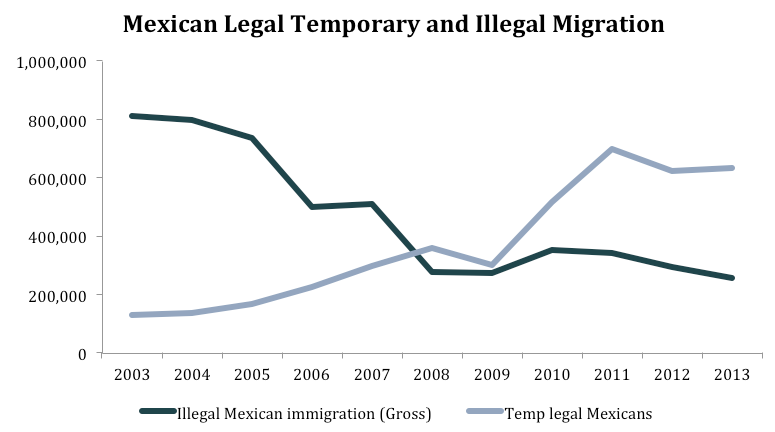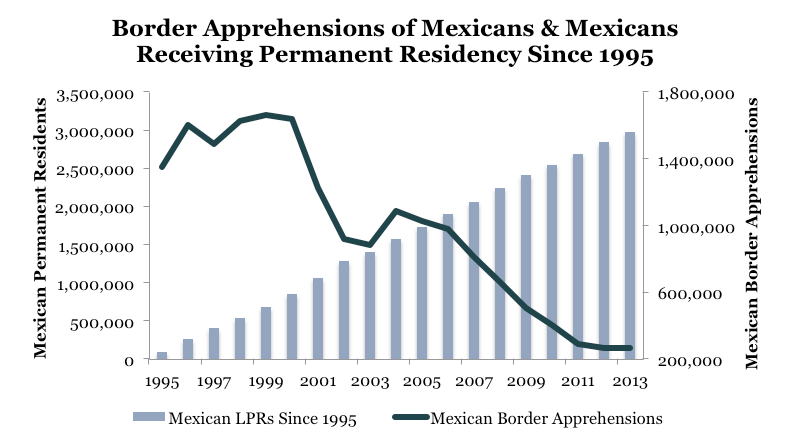I made the case last month that the 2016 federal spending bill’s provision increasing H-2B visas would reduce illegal immigration. Alex Nowrasteh at the Cato Institute further fleshed out the point in a post the following week. He takes a look at all temporary worker categories, and finds that almost all of the reduction in Mexican illegal immigration since 2004 can be explained by greater work visas for Mexicans over the decade.
Nowrasteh finds:
From 2002 to 2008, the change in the number of Mexican illegal immigrants each year explains 97.8 percent of the variation in all Mexican entrants. From 2009 to 2013, the annual change in temporary migrants on visas explains 97.8 percent of the annual variation in all Mexican entrants.
Mexican migration flows didn’t end. In fact, just as the theory predicts, the number of new Mexican immigrants—legal and illegal—has not declined at all since 2002. It has just switched to a primarily legal flow.
But there is another fact that may be as great of a factor as the increases in temporary migration. Since 1995, the United States has granted legal permanent residency to nearly 3 million Mexicans, creating a large pool of individuals who are authorized to work in the U.S. and can legally travel back and forth to Mexico. The number of Mexican legal permanent residents since 1995 predicts 92.2 percent of the variation in the number of Mexicans apprehended at the border – a proxy measure for the amount of illegal immigration.
No doubt both factors deserve credit for the decline of illegal immigration from Mexico. But no matter how you look at it, the U.S. has essentially legalized immigration from Mexico to such an extent that it is much less costly to enter legally than illegally. Continuing this policy—and extending it to other countries in Latin America—is the only way to end illegal immigration once and for all.

